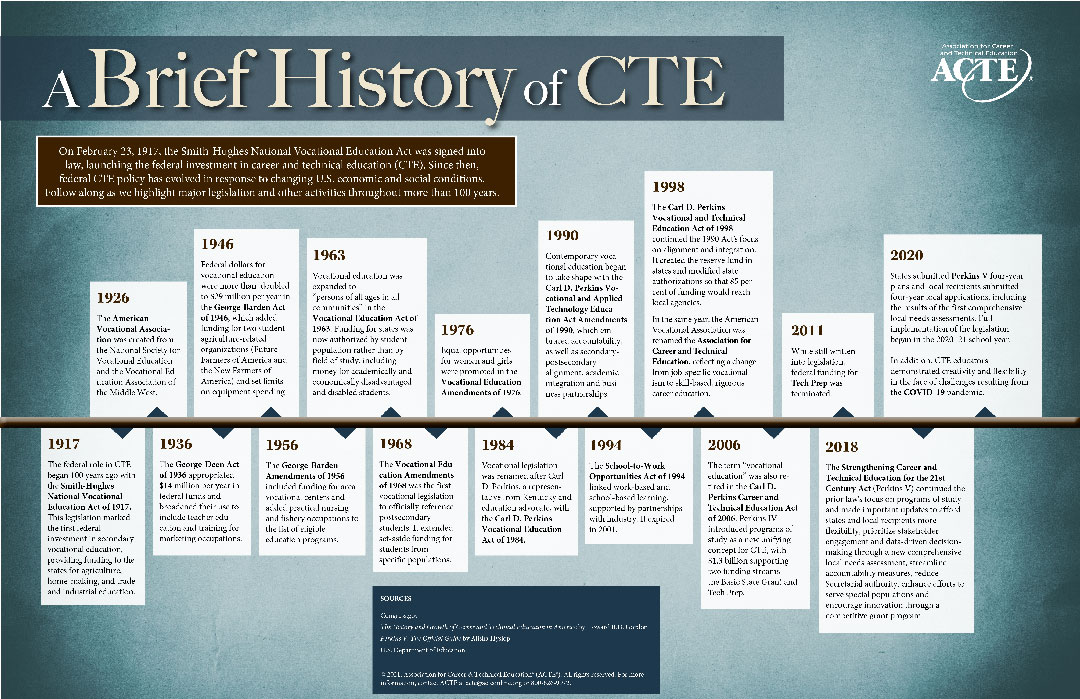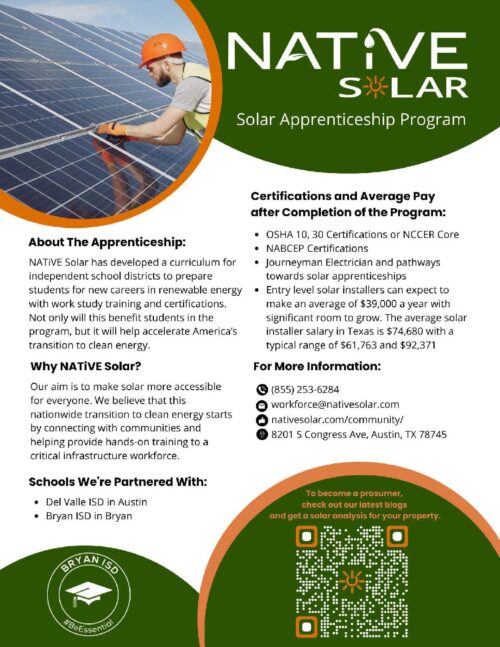CTE Programs Offer Hope for Solar Jobs & Alternative Energy Training
The Pitfalls of Career & Technical Education over the century: Alternative Energy and Solar Jobs Offer Hope, Green Career Pathways, and High Paying Jobs
Historically, Career & Technical Education (CTE) programs have been at the forefront of workforce training and development. In the early 1900s, high schools would equip students with jobs in the trades that had a high earning potential. High school juniors and seniors would often opt for work-study programs and were able to take the skills they learned beyond the classroom. Students had options to avoid college debt and graduate with certifications, needed skills, and a glimpse of freedom as they enter the workforce.
Over time, trade skills in agricultural technology, manufacturing, and construction science were still available, but needed maintenance. Trade skill jobs seemed to go out of fashion and were often seen as low-level or just blue collar jobs. Consequently, vocational programs in schools and CTE’s role were eclipsed by the heavy promotion of college and university programs.
While university programs have continued to grow, in recent years many Independent Schools Districts (ISDs) have struggled to engage students through vocational training as the curriculum has lost its relevance. As America began to outsource many of its manufacturing jobs, the nation simultaneously dismissed emerging career opportunities, falling 10 to 20 years behind in core innovations like renewable energy, mobility, and quantum computing.
What about Solar Jobs?
Today, solar PV has proven to be a catalyst for change in clean energy solutions as we build a more sustainable and resilient community. Nonetheless, training for solar jobs has fallen short. While the Department of Energy touted a lofty goal of 30% solar PV by 2030 (currently at ~4% PV), the Department of Labor failed to approve a solar apprenticeship program. The net effect is that schools across the nation have zero funding capabilities to train for solar jobs, no money to buy the needed supplies, and no standardized curriculum or educational methods. In contrast, the Department of Labor did approve a wind apprenticeship program.
As a result of the lack of coordinated strategy to achieve America’s energy goals, schools, CTE directors, and administrators were left perplexed and challenged to provide their own funding and training. Furthermore, schools have no or very limited mechanisms for reimbursement for graduates entering the workforce with certifications and licenses through the Texas Education Agency. Those interested in offering a solar focused class are therefore seeking help from industry experts to mix and match solar training curriculum. This dysfunctional approach to the tremendous workforce demand and clean energy career opportunities ultimately leaves our electrical infrastructure and energy security at risk of failure amidst increasing cyber and physical threats due to politics and climate change.
Innovative ISDs Step up and Capitalize on the Opportunity, but what about Scale?
Bryan ISD, near College Station, currently has a 100 acre CTE complex that services three surrounding ISDs (Caldwell ISD, Snook ISD, and College Station ISD) as well as the students at Bryan ISD. Of the students enrolled in the two year CTE program, 80% come from economically disadvantaged backgrounds.
Current CTE programs, like the one available at Bryan ISD, are making a comeback and returning to the forefront of industry trends. Not only are they teaching students construction (electrical, plumbing, carpentry, and welding) and automotive trades, they are also now incorporating engineering, programming, and robotics education as well. Solar is a natural fit to join the curriculum as we move into the future of alternative energy production.

Adding Solar Education to the Mix
Solar education, which includes sales, system design, installation, O&M service, and even cybersecurity offers students the opportunity to lead the transition to clean energy while building a critical infrastructure workforce. There is tremendous demand for more trade skills in the solar industry and with competitive pay rates, students directly out of high school can begin their journey of becoming an agent for change as we accelerate alternative energy solutions.
CTE programs such as the one at Bryan ISD allow students to get the advanced education they need to enter specialized industries without attending a four-year college. However, the program can also serve students who want to continue on and get a college education in the future. An advanced knowledge of industry practices can help students decide which avenues they do or do not want to pursue as they journey through their unique college experience.
NATiVE Solar is Excited to Announce a Partnership with Bryan ISD and we look forward to making an impact together as we build resilient communities in Aggieland. Together we will accelerate a critical infrastructure workforce through schools and innovators in the greater Bryan College Station community. Read more about our solar pioneers at BISD and download our Solar In Schools flier below.


































Leave A Comment